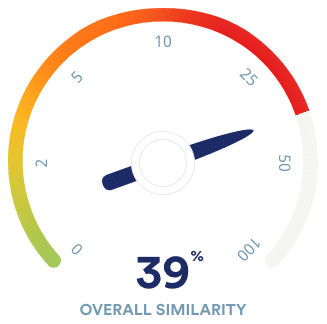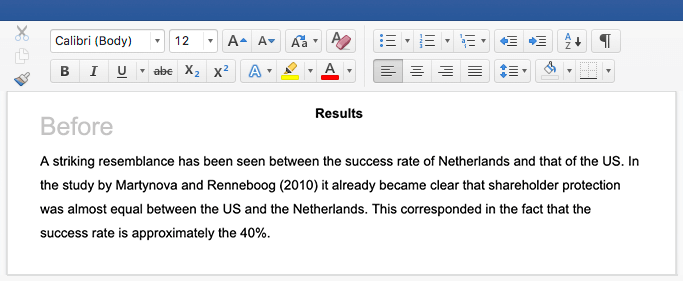:max_bytes(150000):strip_icc()/Writing-Vincent-Hazat-PhotoAlto-Agency-RF-Collections-Getty-Images-pha202000005-589588bc5f9b5874eec64230.jpg)
Choose the top three ideas and write each one at the top of a clean page. Now go through your notes again and pull out supporting ideas for each key point. You don't need a lot, just two or three for each one.
Anna Bryukhanova/E Plus / Getty Images
Your title should make someone want to read what you have to say. Make it provocative.
Put your idea into a single sentence. This is your thesis statement, your main idea.
Introduction
:max_bytes(150000):strip_icc()/Student-Thinking-Echo-Cultura-Getty-Images-460704649-58958e2e3df78caebc911b5f.jpg)
Your introduction is one short paragraph, just a sentence or two, that states your thesis (your main idea) and introduces your reader to your topic. After your title, this is your next best chance to hook your reader. Here are some examples:
Write a paragraph about each of these key points, using the information you've pulled from your notes. If you don't have enough for one, you might need a stronger key point. Do more research to support your point of view. It's always better to have too many sources than too few.
Choose a title for your essay that expresses your primary idea. The strongest titles will include a verb. Take a look at any newspaper and you'll see that every title has a verb.
Before you can start writing, you must have an idea to write about. If you haven't been assigned a topic, it's easier than you might think to come up with one of your own.

- POOR: People do a lot of things.
- BETTER: People perform a lot of tasks.
We use spoken and written words every single day to communicate ideas, thoughts, and emotions to those around
After you remember to close your mouth, which has been hanging open, you run next door to tell your friend what you saw. What do you say? If you know a couple of key words, you can quickly explain to this person what you saw. Instead of describing the number of windows and the length of the car, you could simply say that you saw a black limousine (a long, luxurious car). Then, instead of describing the man with the white gloves, you could say you saw the chauffeur (someone paid to drive a car or limousine) walk to the back of the car. Knowing these key words can help you quickly and effectively communicate your meaning.
Vocabulary games are another great way to develop your vocabulary. You can find hundreds of ways to build your vocabulary. Who doesn’t love playing games? And these games have the added benefit of helping you add to your writer’s “toolbox.” Do you have difficulty with homophones (words that sound alike)? Then try these homophone games. You can even bone up on synonyms (words with similar meanings). Learning the meanings of root words is another way you can strengthen your vocabulary skills, so try these games and see what you know. Strengthening your vocabulary doesn’t have to be boring!
Why is a Strong Vocabulary Important?

Ways that having a strong vocabulary helps when writing include:
Another way to develop a strong vocabulary is to read books with rich vocabulary. These books will help you see the words in context (in their natural settings). The context can help you guess the meanings of the words and can give you a good sense of how they’re used.
When you’re faced with a writing assignment, a good vocabulary is an indispensable (very important or necessary) tool. If you have several synonyms (words with similar meanings) in your repertoire (“toolbox”), you’ll be able to choose the best word for the job. Avoid vague words like “stuff” or “things” when you write. These words do not give the reader a good sense of your meaning. Also, use strong verbs that give the reader good information.

I have introduced the topic with necessary background information.
Particularly in longer essays, it’s helpful to end the introduction by signposting what will be covered in each part. Keep it concise and give your reader a clear sense of the direction your argument will take.
When you’ve finished writing the essay body and conclusion, you should return to the introduction and check that it matches the content of the essay.
The structure of an essay is divided into an introduction that presents your topic and thesis statement, a body containing your in-depth analysis and arguments, and a conclusion wrapping up your ideas.
Step 5: Check and revise
You can use the checklist below to make sure your introduction does everything it’s supposed to.
The “hook” is the first sentence of your essay introduction. It should lead the reader into your essay, giving a sense of why it’s interesting.
It’s especially important to make sure your thesis statement accurately represents what you do in the essay. If your argument has gone in a different direction than planned, tweak your thesis statement to match what you actually say.

An essay is a focused piece of writing designed to inform or persuade. There are many different types of essay, but they are often defined in four categories: argumentative, expository, narrative, and descriptive essays.
Sitting out in the garden, I feel serene. I feel at home. And yet I always feel there is more to discover. The bounds of my garden may be small, but there is a whole world contained within it, and it is one I will never get tired of inhabiting.
An argumentative essay presents an extended, evidence-based argument. It requires a strong thesis statement—a clearly defined stance on your topic. Your aim is to convince the reader of your thesis using evidence (such as quotations) and analysis.
King’s speech is infused with prophetic language throughout. Even before the famous “dream” part of the speech, King’s language consistently strikes a prophetic tone. He refers to the Lincoln Memorial as a “hallowed spot” and speaks of rising “from the dark and desolate valley of segregation” to “make justice a reality for all of God’s children.” The assumption of this prophetic voice constitutes the text’s strongest ethical appeal
Table of contents
- The introduction provides your topic and thesis statement
- The body presents your evidence and arguments
- The conclusion summarizes your argument and emphasizes its importance
The vast majority of essays written at university are some sort of argumentative essay. Almost all academic writing involves building up an argument, though other types of essay might be assigned in composition classes.
The example below is a paragraph from the body of an argumentative essay about the effects of the internet on education. Mouse over it to learn more.

A piece’s writing style can help you figure out what kind of writing it is, what its purpose is, and how the author’s voice is unique. With so many different types of writing, you may think it’s difficult to figure out the specific writing style of a piece or you'll need to search through a long list of writing styles.
“We had luncheon in the dining-room, darkened too against the heat, and drank down nervous gayety with the cold ale. ‘What’ll we do with ourselves this afternoon?’ cried Daisy, ‘and the day after that, and the next thirty years?’ ‘Don’t be morbid,’ Jordan said. ‘Life starts all over again when it gets crisp in the fall.’ ‘But it’s so hot,’ insisted Daisy, on the verge of tears, ‘and everything’s so confused. Let’s all go to town!’ -The Great Gatsby by F. Scott Fitzgerald
However, there are actually just four main types of writing styles, and together they cover practically all the writing you see, from textbooks to novels, to billboards and more. Whether you’re studying writing styles for class or trying to develop your own writing style and looking for information, we’ve got you covered.
Writers use the expository style when they are trying to explain a concept. Expository writing is fact-based and doesn’t include the author’s opinions or background. It’s basically giving facts from the writer to the reader.
Understanding the 4 Writing Styles: How to Identify and Use Them

In this guide, we explain the four styles of writing, provide examples for each one, go over the one thing you need to know to identify writing style, and give tips to help you develop your own unique style of writing.
Are you reading The Great Gatsby for class or even just for fun? Then you'll definitely want to check out our expert guides on the biggest themes in this classic book, from love and relationships to money and materialism.
There are four main different styles of writing. We discuss each of them below, list where you’re likely to see them, and include an example so you can see for yourself what each of the writing styles looks like.
